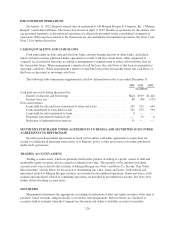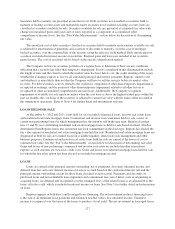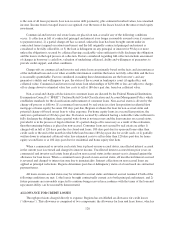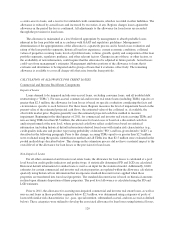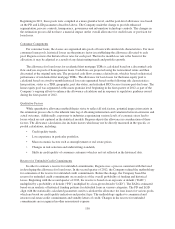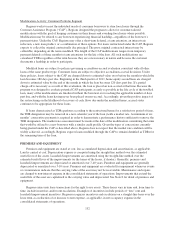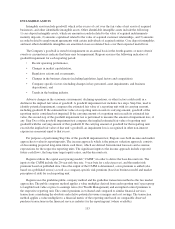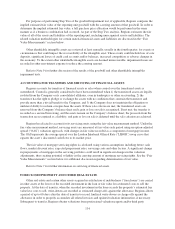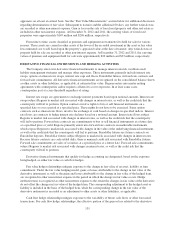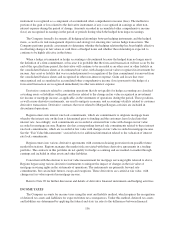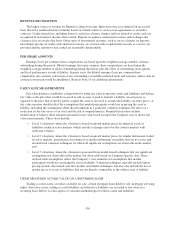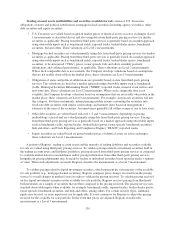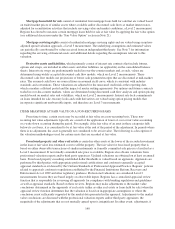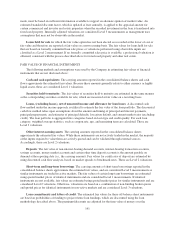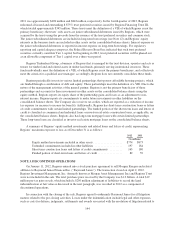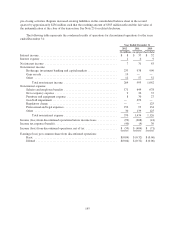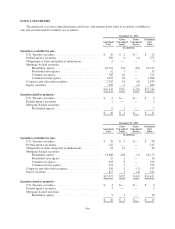Regions Bank 2012 Annual Report Download - page 152
Download and view the complete annual report
Please find page 152 of the 2012 Regions Bank annual report below. You can navigate through the pages in the report by either clicking on the pages listed below, or by using the keyword search tool below to find specific information within the annual report.instrument is recognized as a component of accumulated other comprehensive income (loss). The ineffective
portion of the gain or loss related to the derivative instrument, if any, is recognized in earnings as other non-
interest expense during the period of change. Amounts recorded in accumulated other comprehensive income
(loss) are recognized in earnings in the period or periods during which the hedged item impacts earnings.
The Company formally documents all hedging relationships between hedging instruments and the hedged
items, as well as its risk management objective and strategy for entering into various hedge transactions. The
Company performs periodic assessments to determine whether the hedging relationship has been highly effective
in offsetting changes in fair values or cash flows of hedged items and whether the relationship is expected to
continue to be highly effective in the future.
When a hedge is terminated or hedge accounting is discontinued because the hedged item no longer meets
the definition of a firm commitment, or because it is probable that the forecasted transaction will not occur by the
end of the specified time period, the derivative will continue to be recorded as an other asset or other liability in
the consolidated balance sheets at its estimated fair value, with changes in fair value recognized in investment fee
income. Any asset or liability that was recorded pursuant to recognition of the firm commitment is removed from
the consolidated balance sheets and recognized in other non-interest expense. Gains and losses that were
unrecognized and accumulated in accumulated other comprehensive income (loss) pursuant to the hedge of a
forecasted transaction are recognized immediately in other non-interest expense.
Derivative contracts related to continuing operations that do not qualify for hedge accounting are classified
as trading assets or liabilities with gains and losses related to the change in fair value recognized in investment
fee income or mortgage income, as applicable, in the statements of operations during the period. These positions,
as well as non-derivative instruments, are used to mitigate economic and accounting volatility related to customer
derivative transactions. Derivative contracts that were related to Morgan Keegan activities are included in
discontinued operations.
Regions enters into interest rate lock commitments, which are commitments to originate mortgage loans
whereby the interest rate on the loan is determined prior to funding and the customers have locked into that
interest rate. Accordingly, such commitments are recorded at estimated fair value with changes in fair value
recorded in mortgage income. Regions also has corresponding forward sale commitments related to these interest
rate lock commitments, which are recorded at fair value with changes in fair value recorded in mortgage income.
See the “Fair Value Measurements” section below for additional information related to the valuation of interest
rate lock commitments.
Regions enters into various derivative agreements with customers desiring protection from possible future
market fluctuations. Regions manages the market risk associated with these derivative agreements in a trading
portfolio. The contracts in this portfolio do not qualify for hedge accounting and are marked-to-market through
earnings and included in other assets and other liabilities.
Concurrent with the election to use fair value measurement for mortgage servicing rights referred to above,
Regions began using various derivative instruments to mitigate the impact of changes in the fair value of
mortgage servicing rights in the statements of operations. The instruments are primarily forward rate
commitments, but can include futures, swaps and swaptions. These derivatives are carried at fair value, with
changes in fair value reported in mortgage income.
Refer to Note 20 for further discussion and details of derivative financial instruments and hedging activities.
INCOME TAXES
The Company accounts for income taxes using the asset and liability method, which requires the recognition
of deferred tax assets and liabilities for expected future tax consequences. Under this method, deferred tax assets
and liabilities are determined by applying the federal and state tax rates to the differences between financial
136


